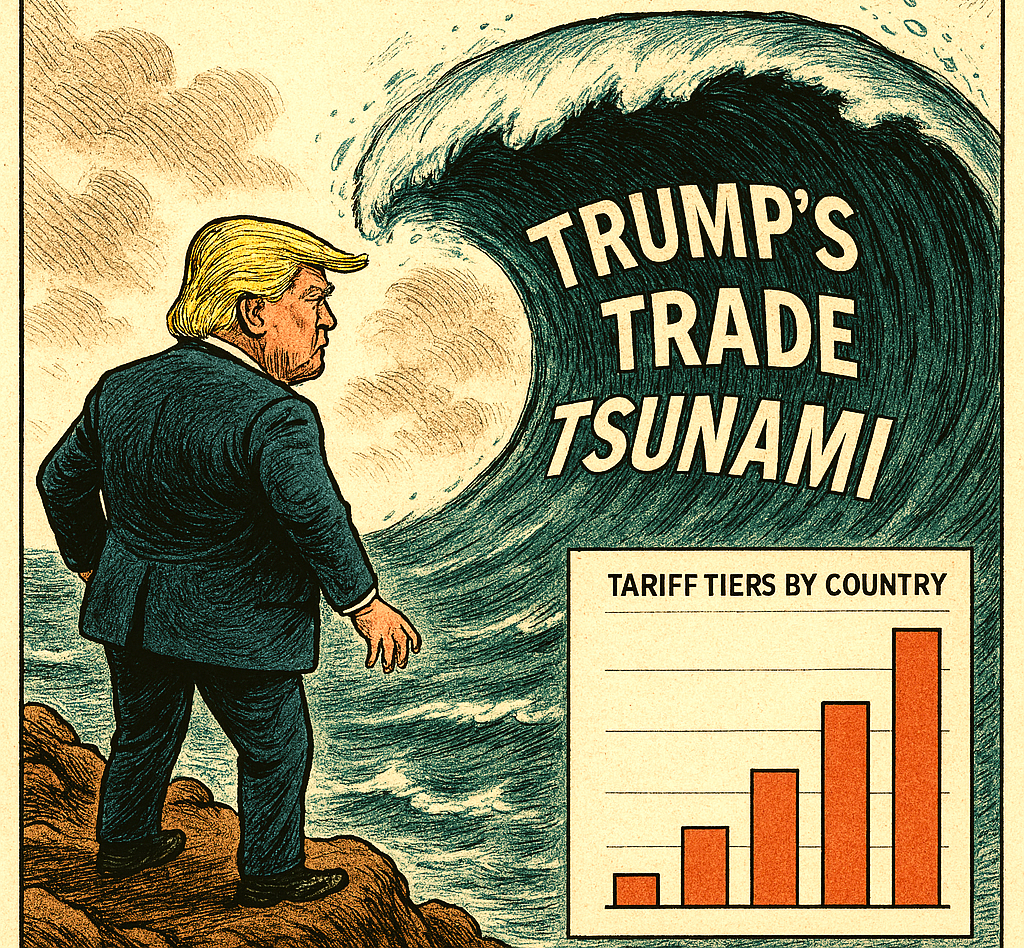Despite the scale and aggression of Donald Trump’s 2025 tariff attack—averaging approximately 27% and targeting nearly 100 countries—financial markets have shown a surprisingly muted response.
Here’s a breakdown of why that might be
🧠 1. Markets Have Priced in the Chaos
- Trump’s protectionist rhetoric and erratic trade moves have been a fixture since his first term. Investors have grown desensitized to tariff threats and now treat them as part of the geopolitical noise.
- The April ‘Liberation Day’ announcement triggered initial volatility, but subsequent delays, exemptions, and partial deals (e.g. with the UK, EU, Japan) softened the blow.
🧮 2. Selective Impact and Exemptions
- Tariffs are not blanket: electronics, smartphones, and some pharmaceuticals are exempt.
- Countries like the UK and Australia face relatively low rates (10%), while others like Brazil and Switzerland are hit harder (50% and 39%).
- For India, even the steep 50% tariff affects only 4.8% of its global exports.
🔄 3. Supply Chain Adaptation
- Companies are already pivoting manufacturers are reshoring or shifting production to tariff-friendly countries like Vietnam and Bangladesh.
- Agri-tech and automation investments are helping offset cost pressures in affected sectors.
💰 4. Short-Term Pain, Long-Term Strategy
- The US expects $2.4 trillion in tariff revenue by 2035, despite $587 billion in dynamic losses.
- Investors are recalibrating portfolios toward resilient sectors (semiconductors, automation) and geographic diversification.
🧊 5. Political Fatigue and Uncertainty Premium
- Trump’s tariff moves are seen as political theatre, especially with his threats often followed by renegotiations or delays.
- Markets may be holding back deeper reactions until retaliatory measures (especially from China) fully materialise.
Where now?
These tariffs spanned sectors from automotive and pharmaceuticals to semiconductors—where a 100% duty was imposed unless firms manufactured in the U.S.
While Trump framed the measures as a push to revive domestic industry and reduce trade deficits, critics argued they were legally dubious and economically disruptive, with a federal court later ruling them unconstitutional.
Despite the aggressive scope, global markets showed surprising resilience, suggesting investors had grown desensitised to Trump’s brinkmanship and were instead focusing on broader economic signals.


